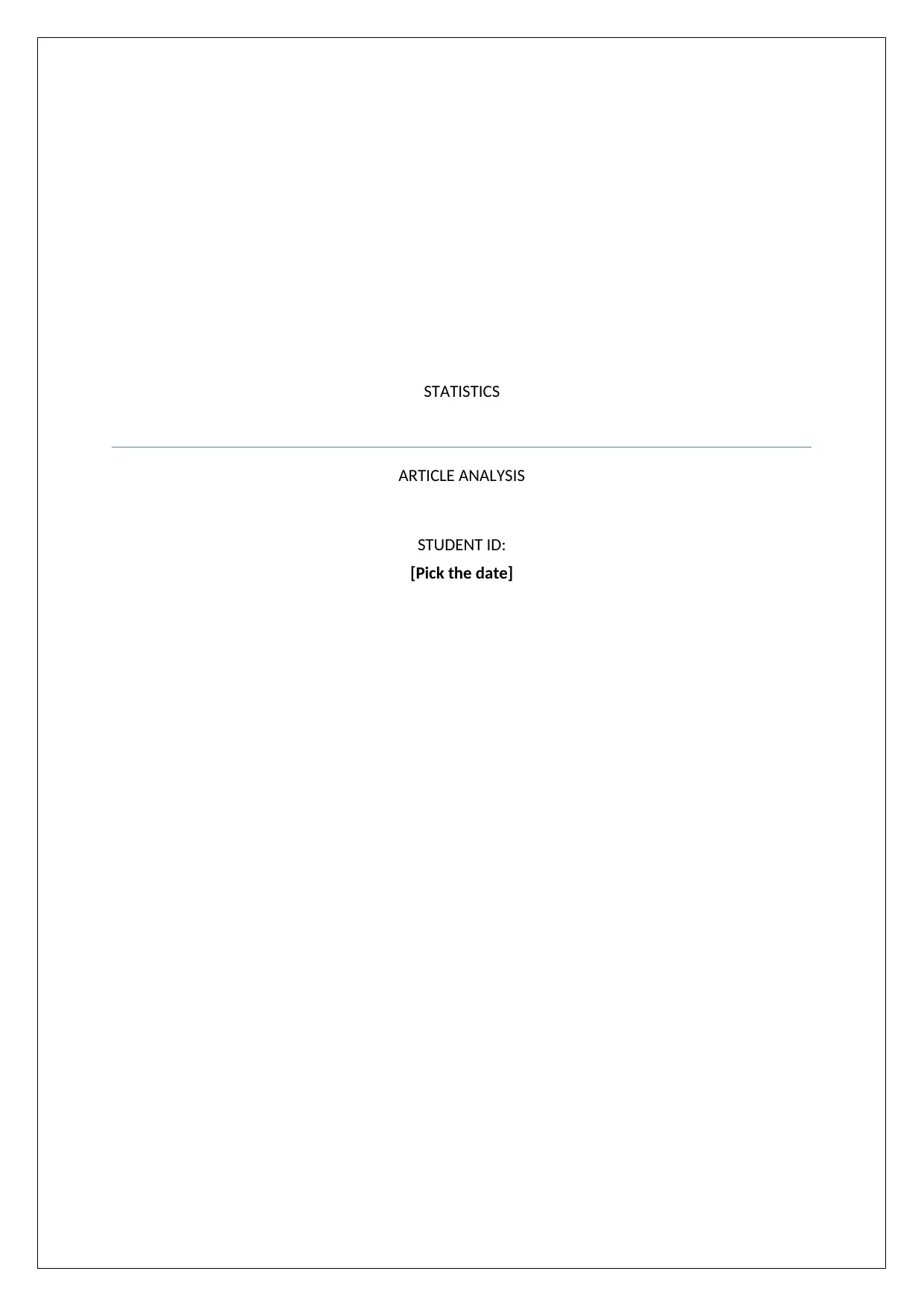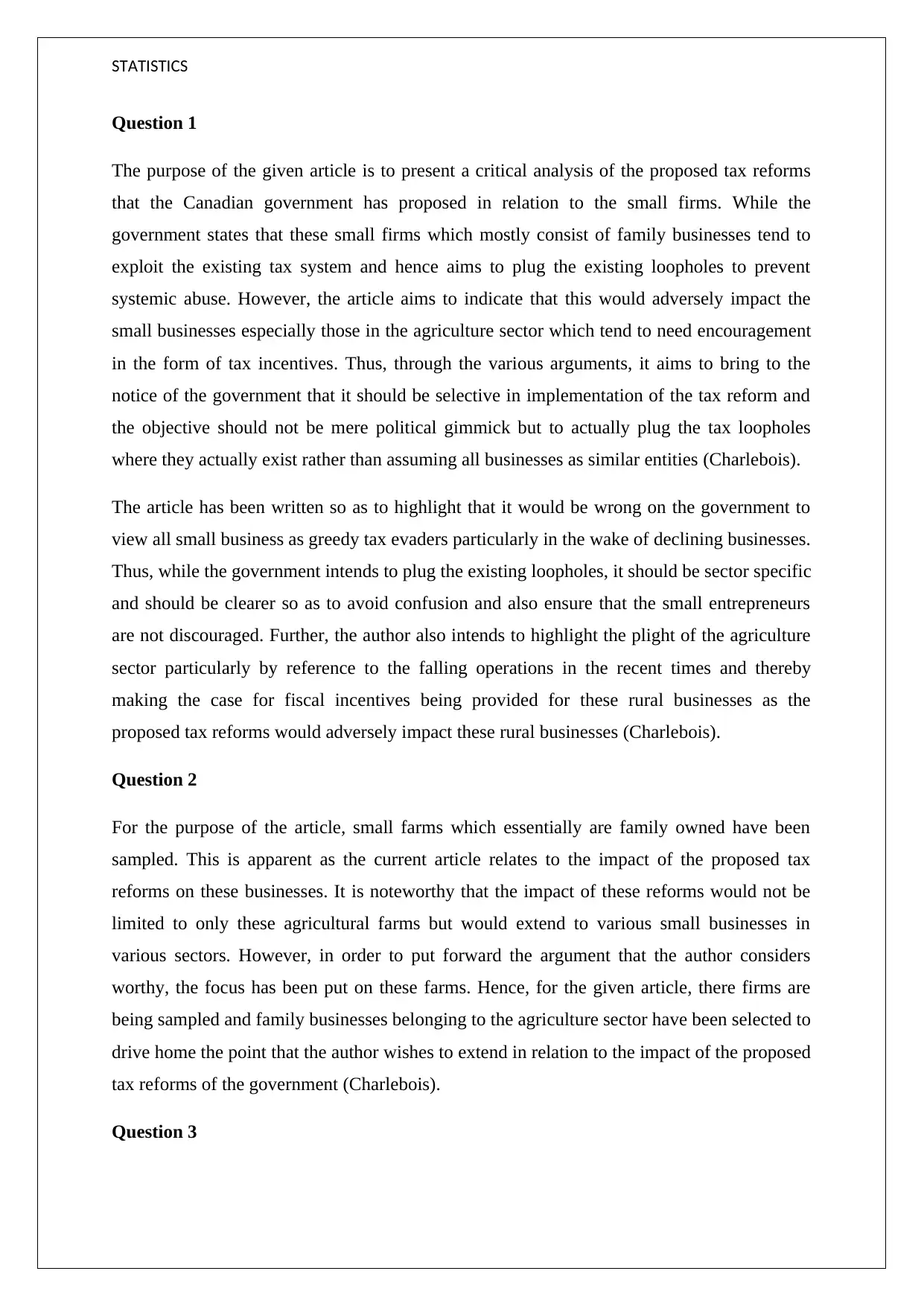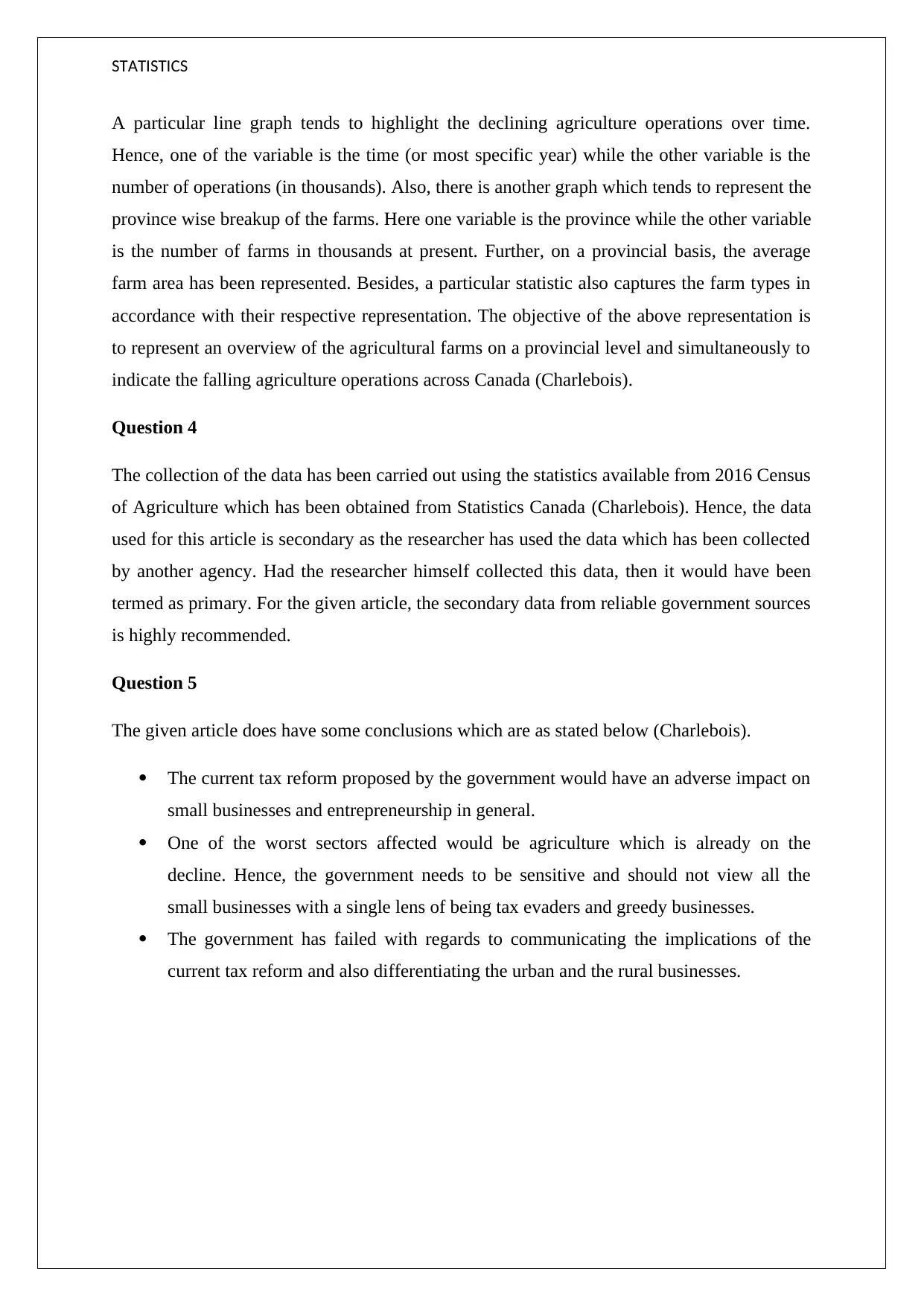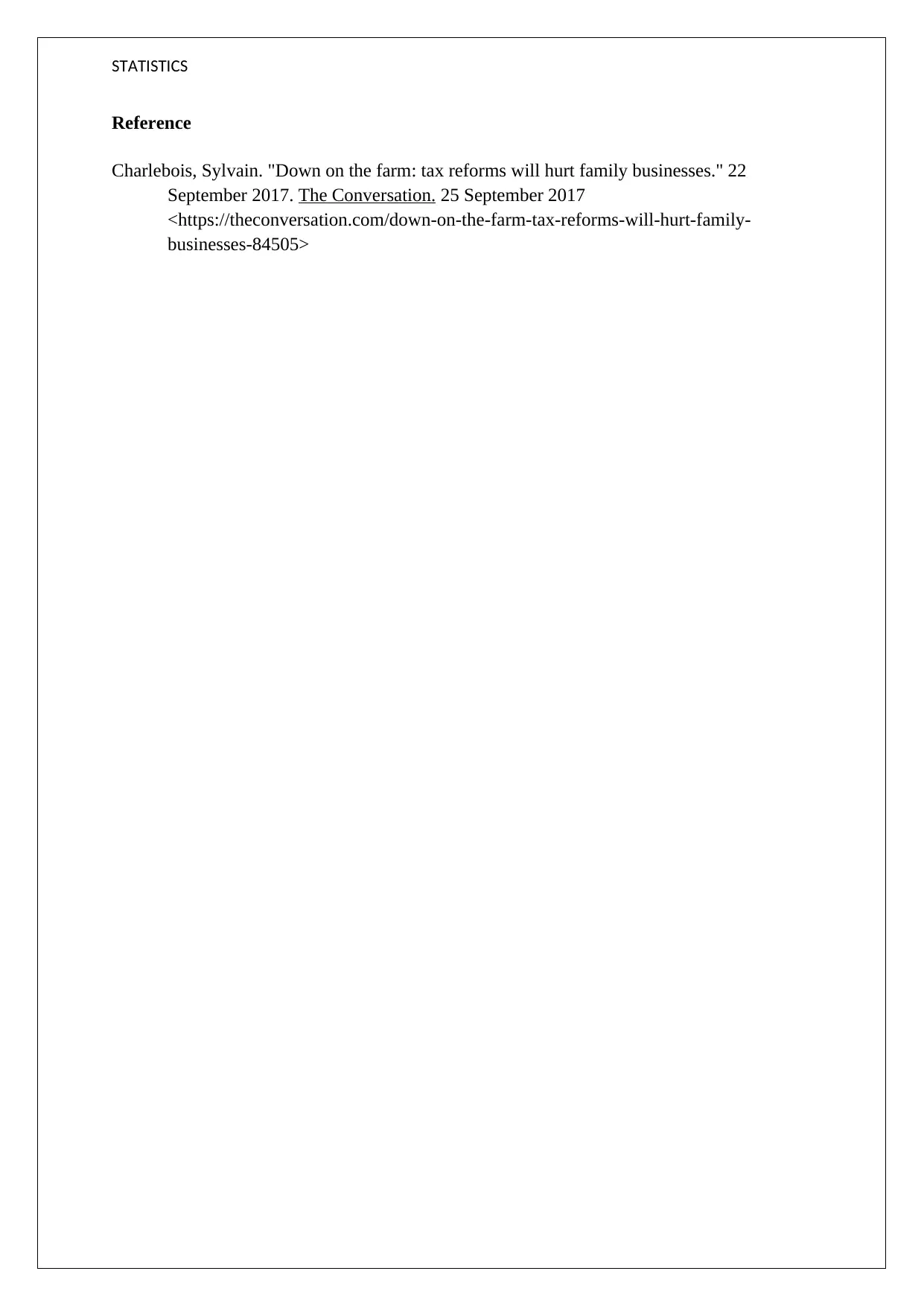Statistics Article Analysis: Canadian Tax Reform Impact on Farms
VerifiedAdded on 2020/04/07
|4
|819
|55
Homework Assignment
AI Summary
This assignment analyzes an article focused on the Canadian government's proposed tax reforms and their potential impact on small businesses, particularly those in the agricultural sector. The analysis addresses the article's purpose, which is to critique the reforms, arguing that they may disproportionately harm family-owned farms by removing tax incentives. The assignment examines the sampling methods used, highlighting the focus on small, family-owned farms to illustrate the author's points. It also outlines the data representations, including line graphs and provincial breakdowns, and identifies the source of the data as the 2016 Census of Agriculture from Statistics Canada, classifying it as secondary data. The analysis concludes by summarizing the article's key findings, which include concerns about the adverse effects of the reforms on small businesses and the agriculture sector, the government's lack of sensitivity, and poor communication regarding the implications of the changes.
1 out of 4





![[object Object]](/_next/static/media/star-bottom.7253800d.svg)